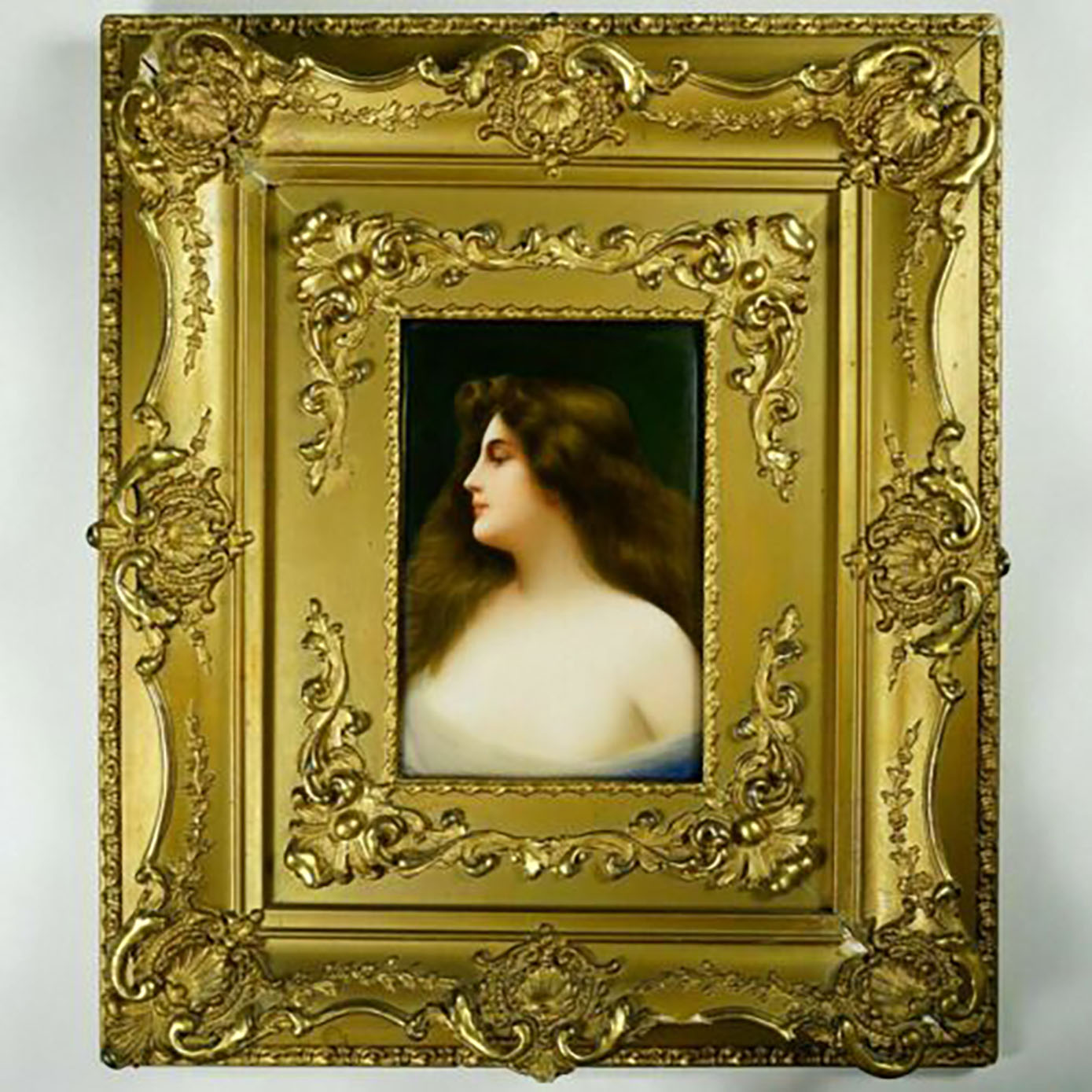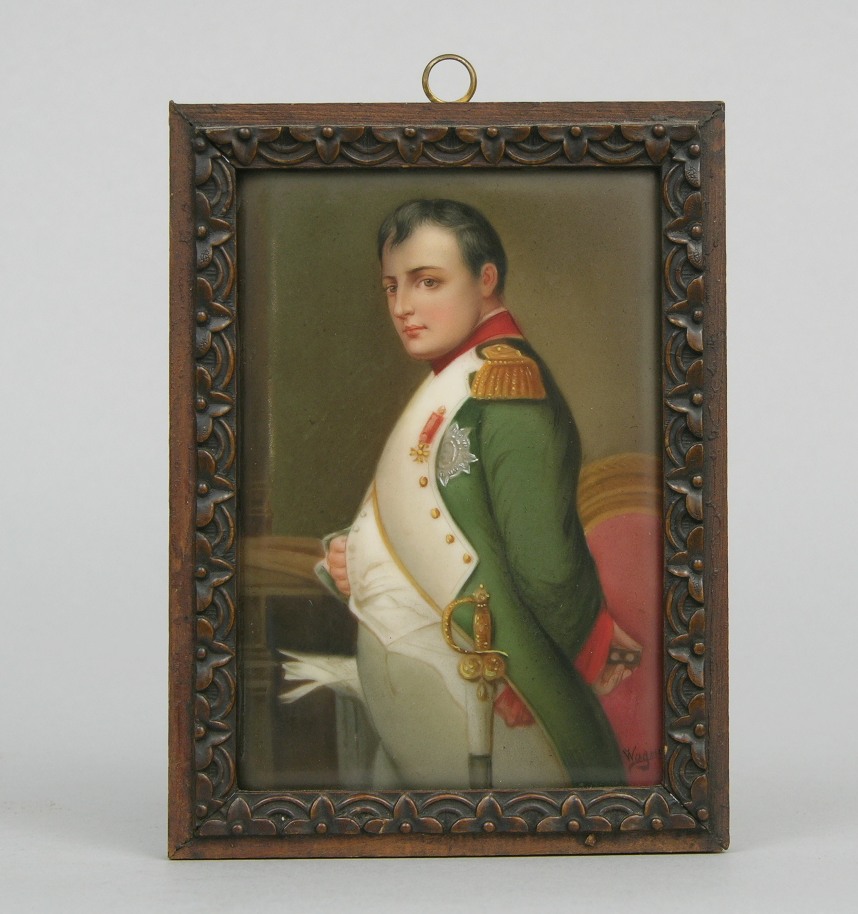April 2023
ANTIQUE DETECTIVE
Once-popular painted porcelain plaques can be pricey and reproductions
by Anne Gilbert
Painted Porcelain Plaques
Back in the 1970s and ‘80s, 19th-century small or miniature painted porcelain portrait plaques were hot collectibles. When they came to market they always looked properly old. They appeared to be painted on porcelain as well as ivory. Sometimes the backs were even covered with what seemed to be 18th or 19th century newsprint. Chances are, your mother or grandmother bought one. Was it worth as much as she paid for it? These days it could be worth thousands of dollars or less than $100. If you have one, check the following facts.

A painted porcelain plaque woman, signed Wagner. (Image courtesy of eBay)
Clues
When considering a pur-chase or a sale, use a strong magnifying glass or a jewelers’ loupe. A decal will show a small dot matrix. Another trick of fakers was to place transfer print plaques under convex glass. This gives the effect of a hand painted piece. Details such as jewelry or hats are touched up with paint. The result is that they are raised under a magnifying glass.
When the small plaques are supposedly framed on ivory, they may actually be on plastic.
By the early 19th century, factories on the continent and in England turned neoclassical paintings, portraits of beautiful women and famous people into decals and miniature plaques. Lady Hamilton and Napoleon were popular subjects.
Pass on a piece when the back is covered with felt and you can’t see makers’ marks. The seller may not even know what is behind the felt backing.
Most fakes are porcelains signed Wagner. However, when it is a hand-signed and hand-painted plaque by the renowned artist Wagner, it could sell for thousands of dollars. You have the clues so do your research if you plan to buy or sell.

A painted porcelain plaque Napoleon. (Image courtesy of eBay)
She has authored nine books on antiques, collectibles, and art and appeared on national TV.
She has done appraisals for museums and private individuals.

